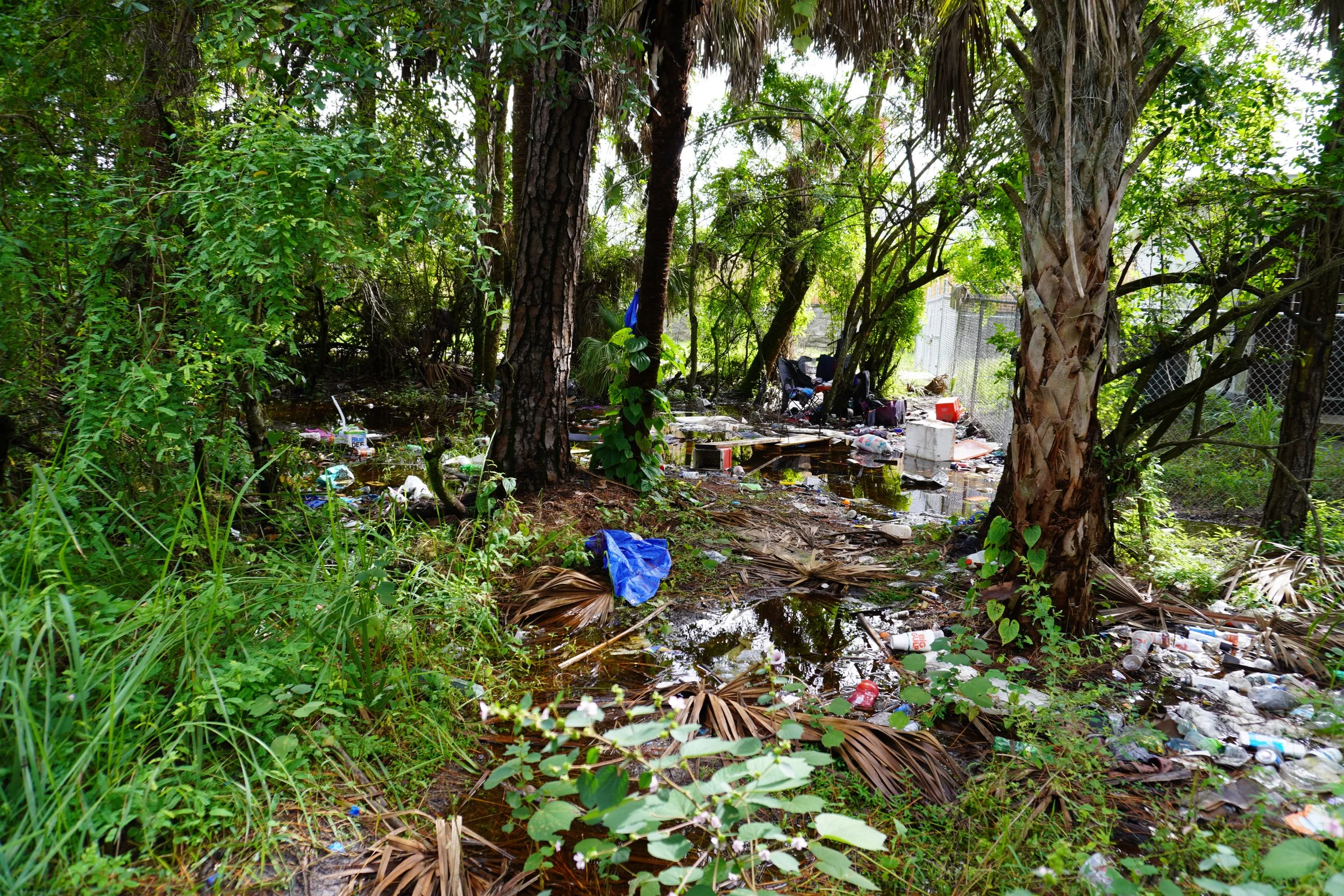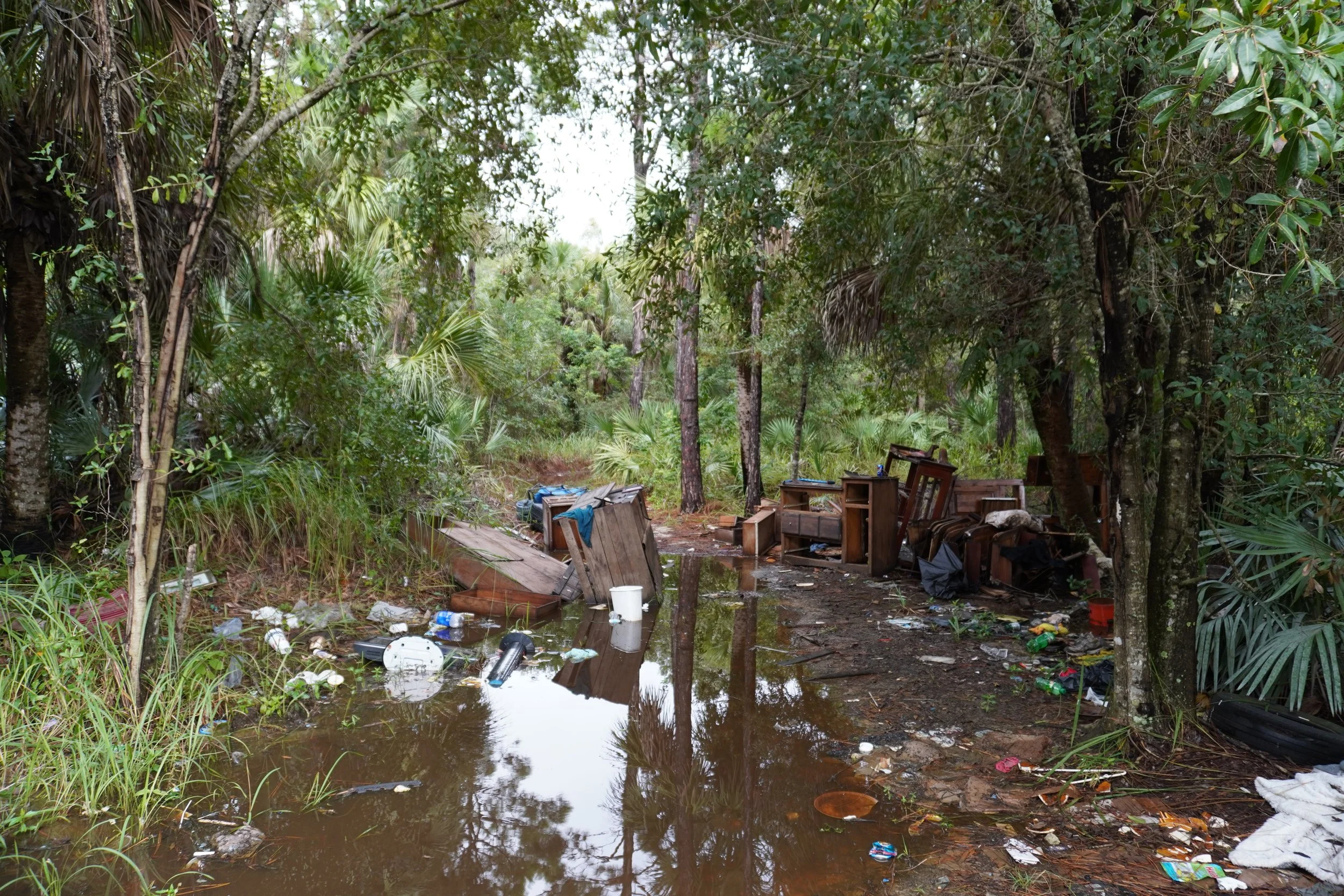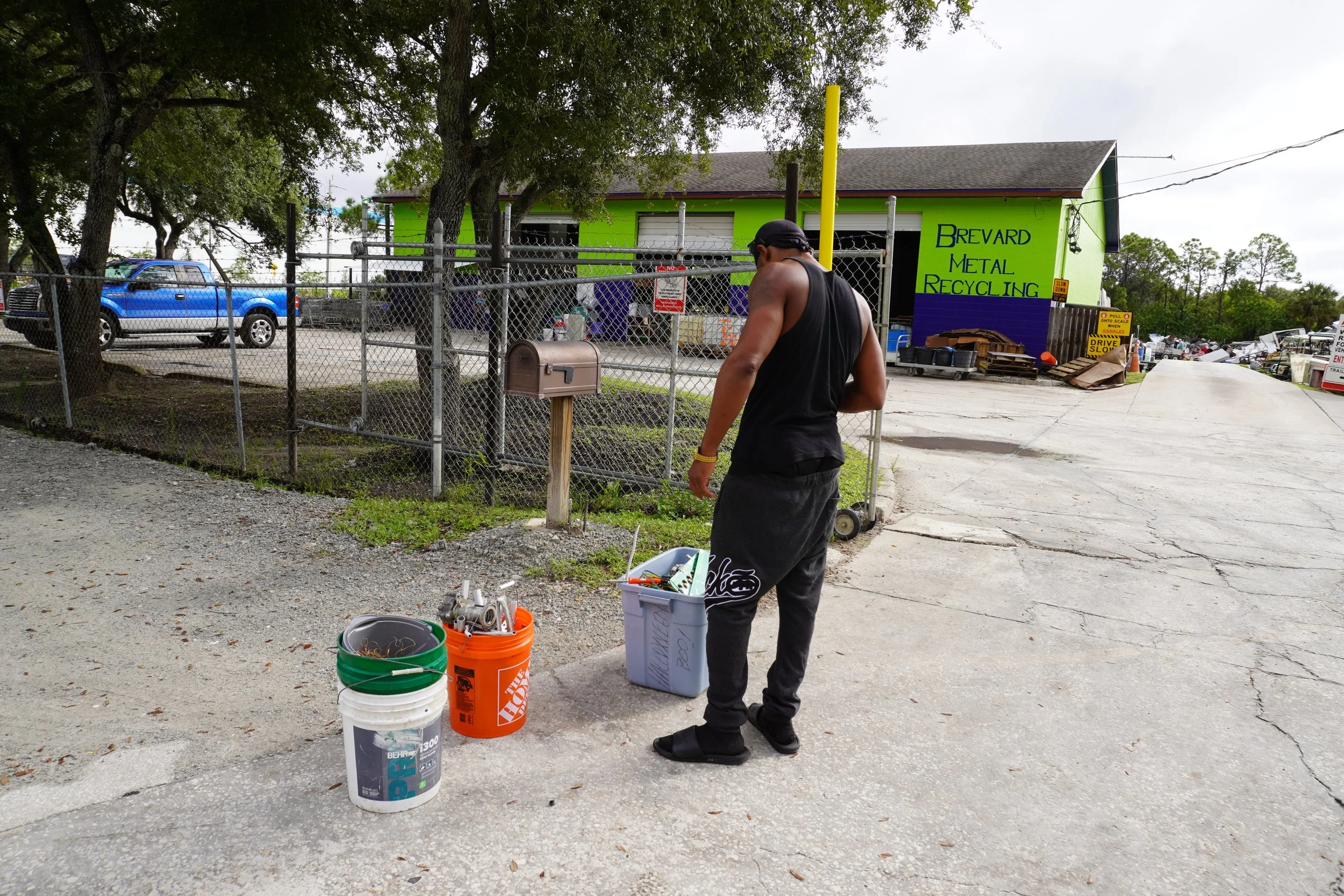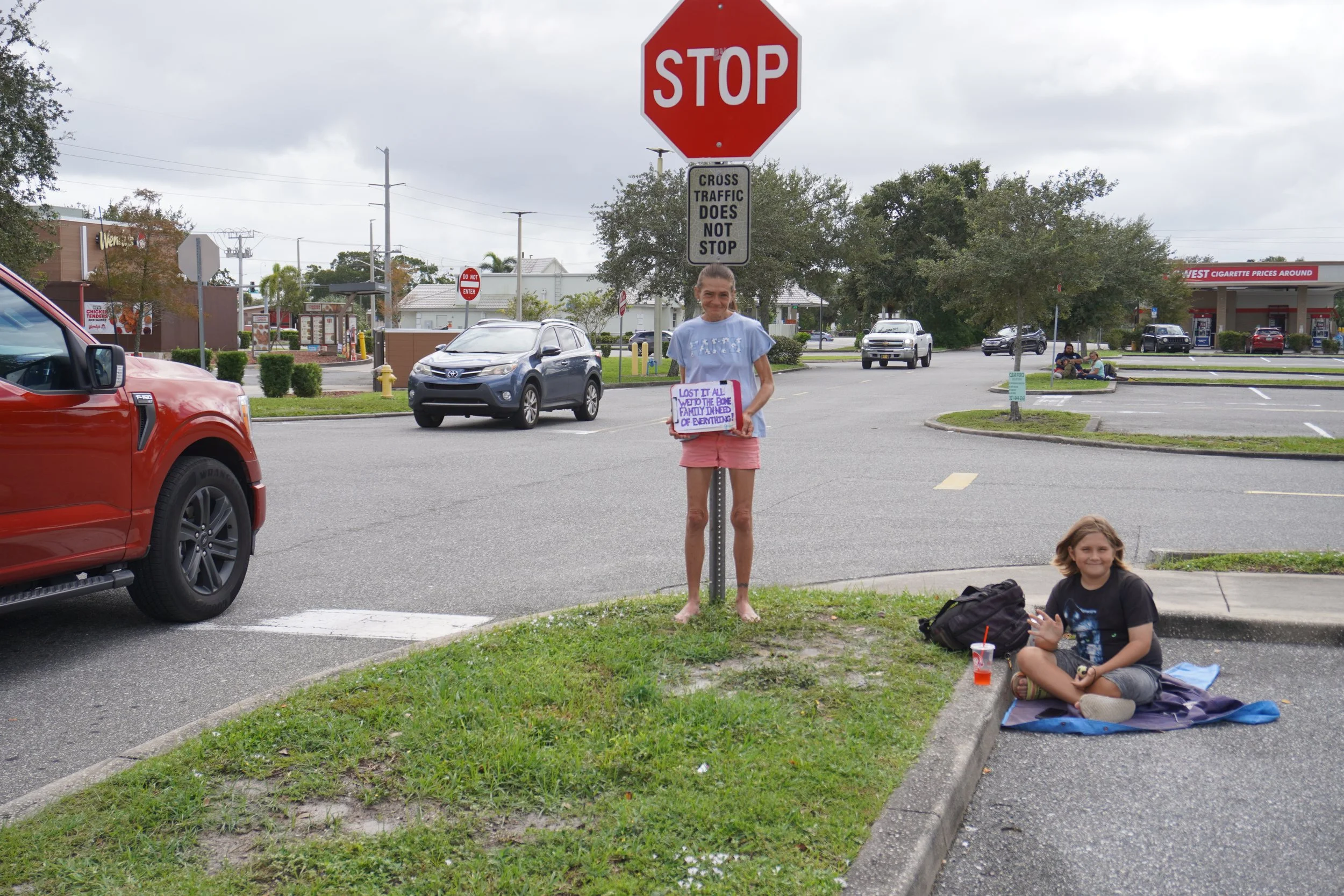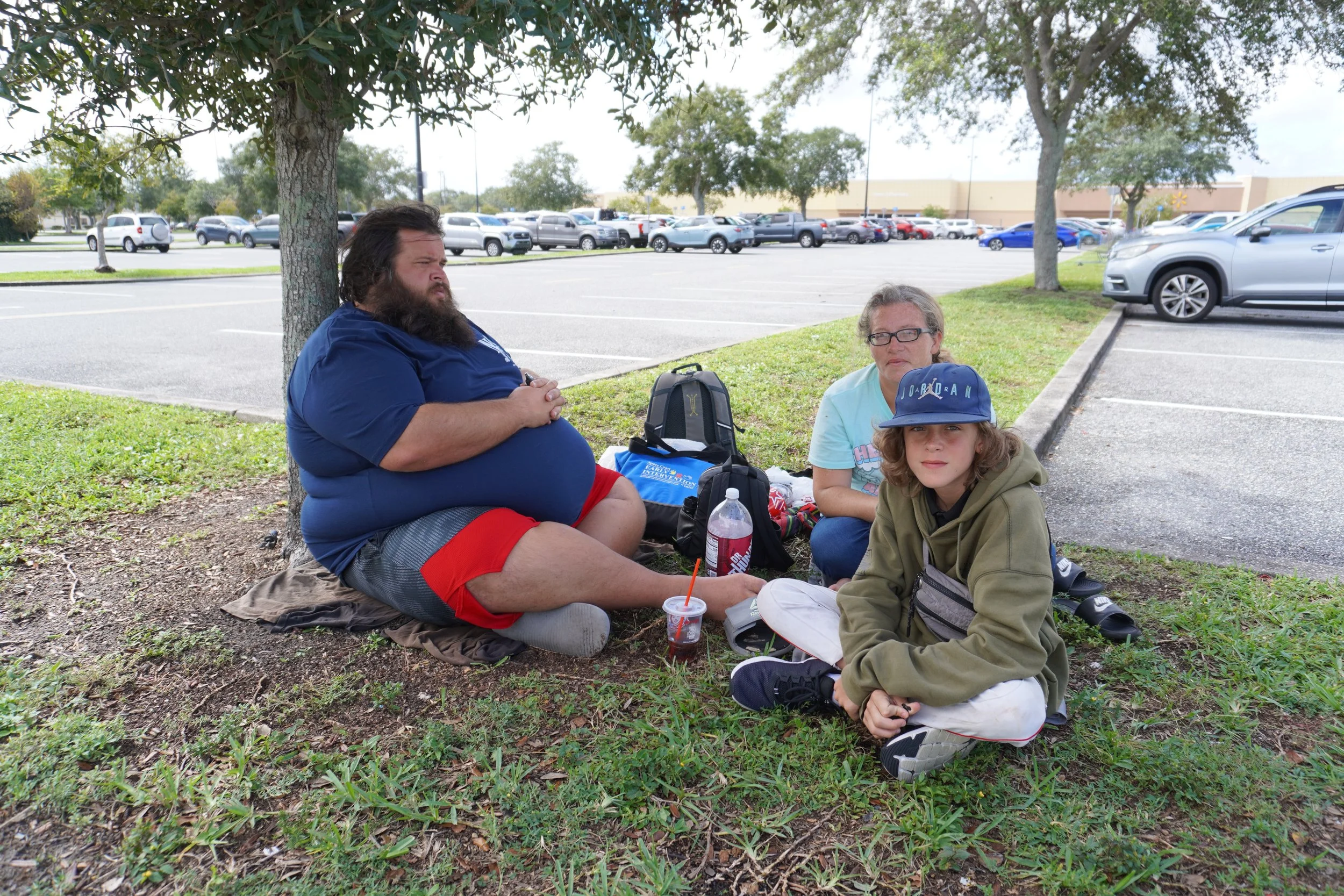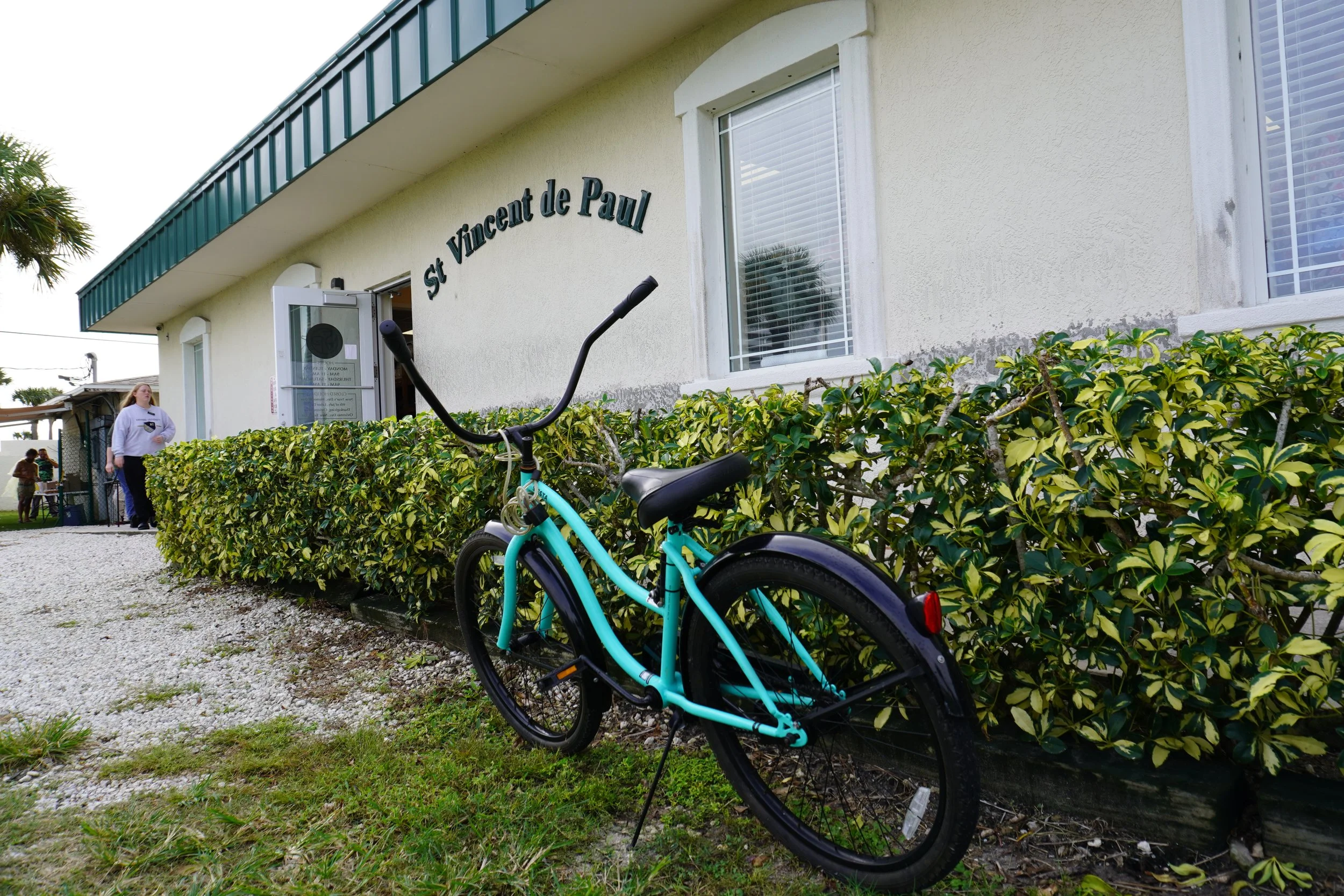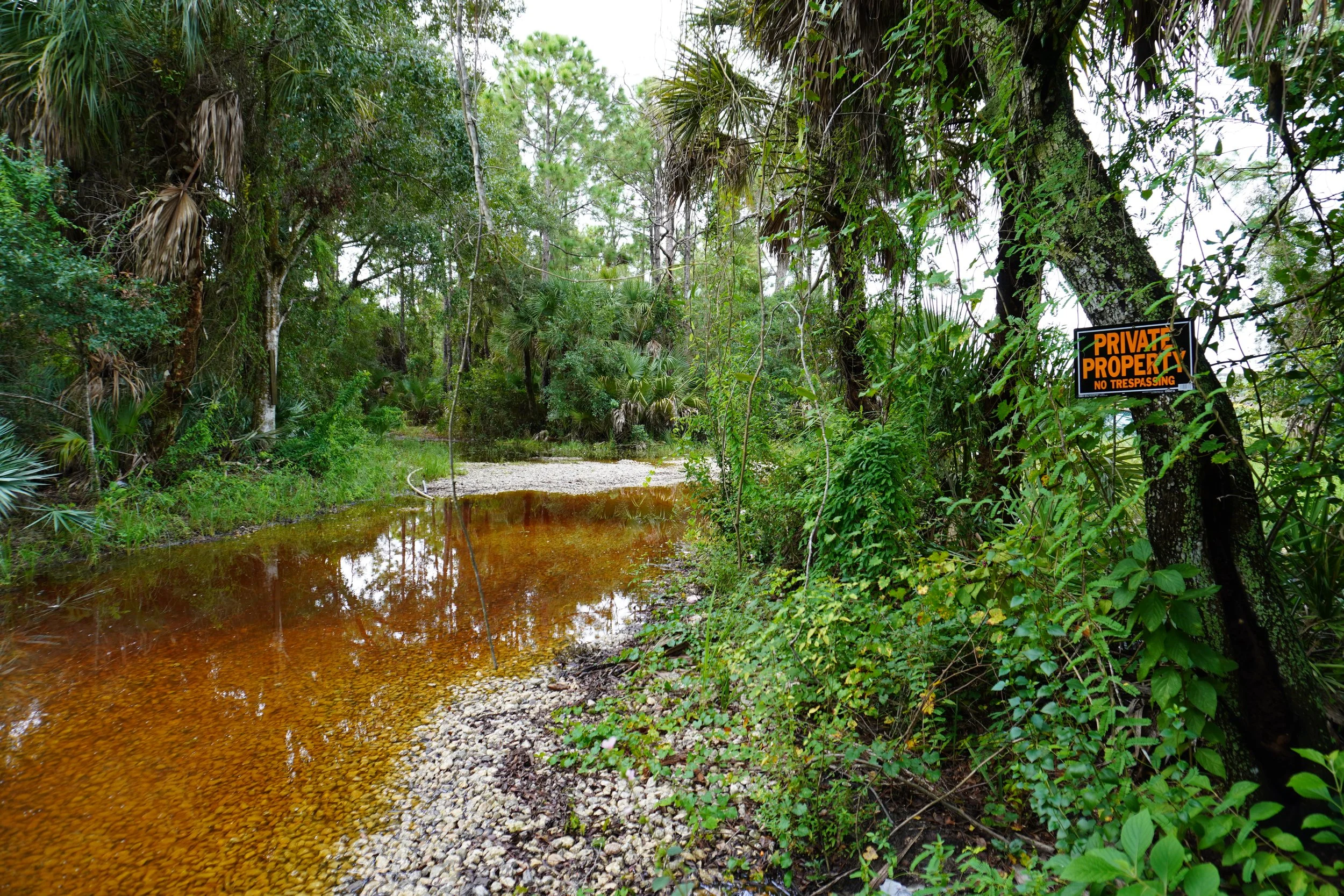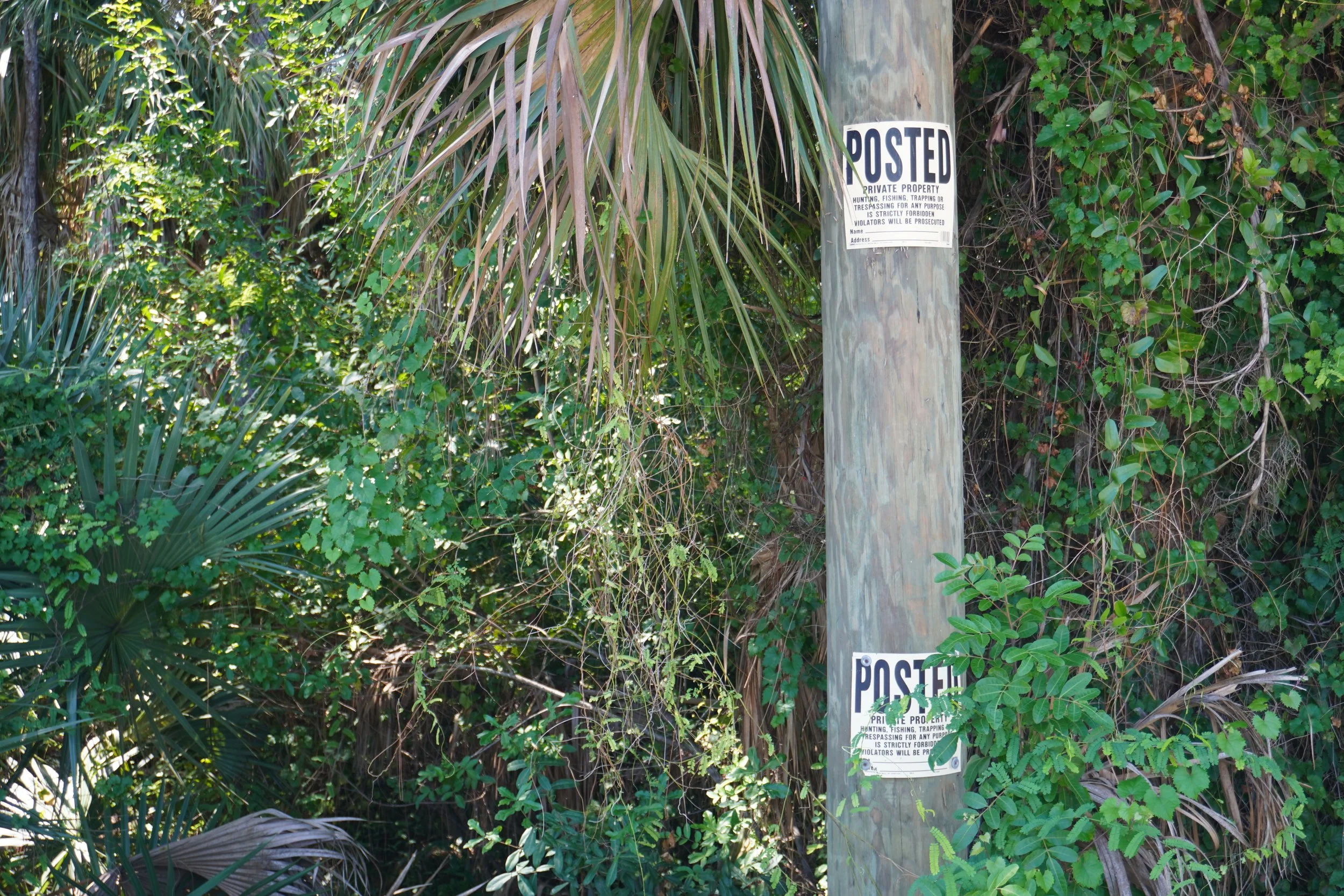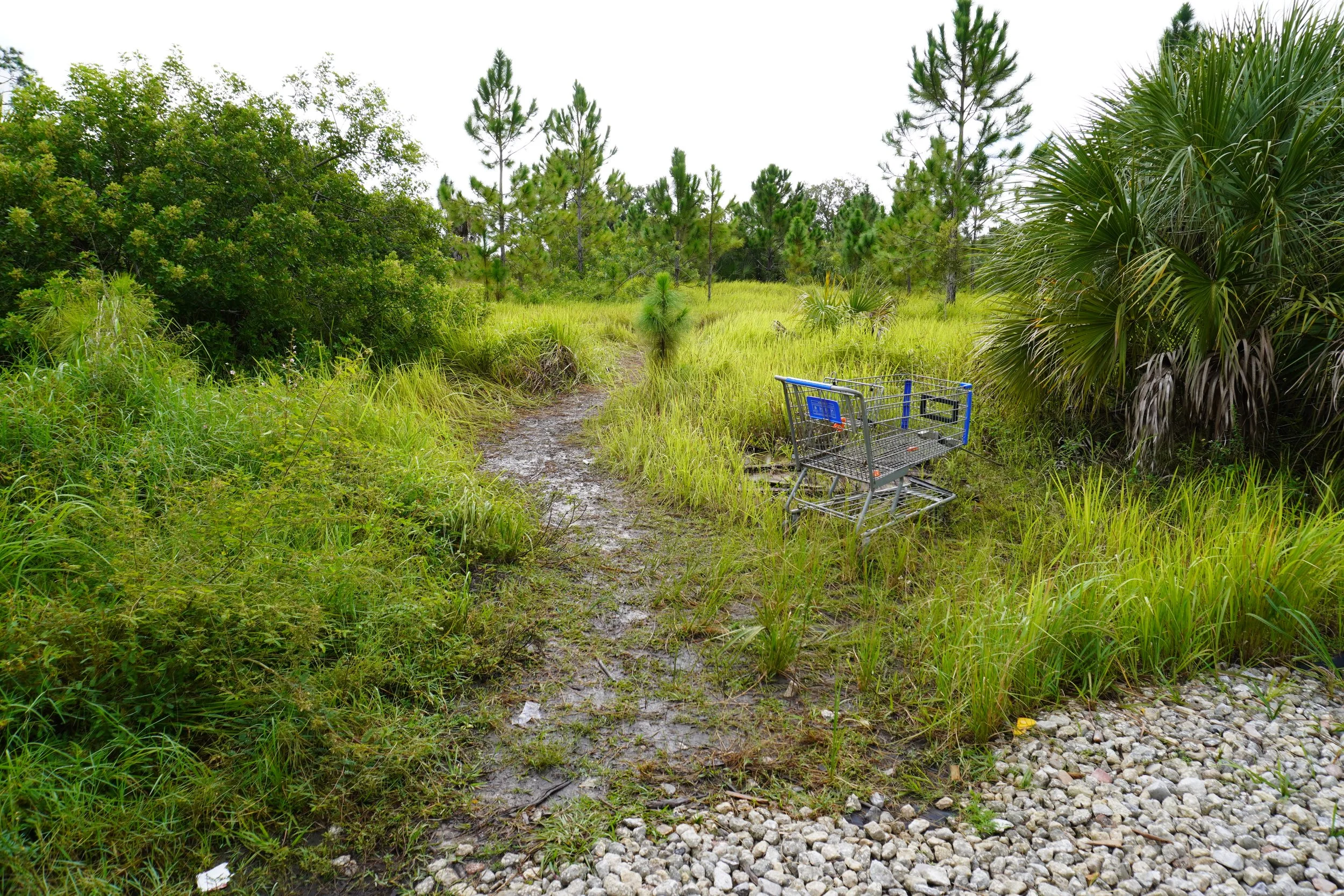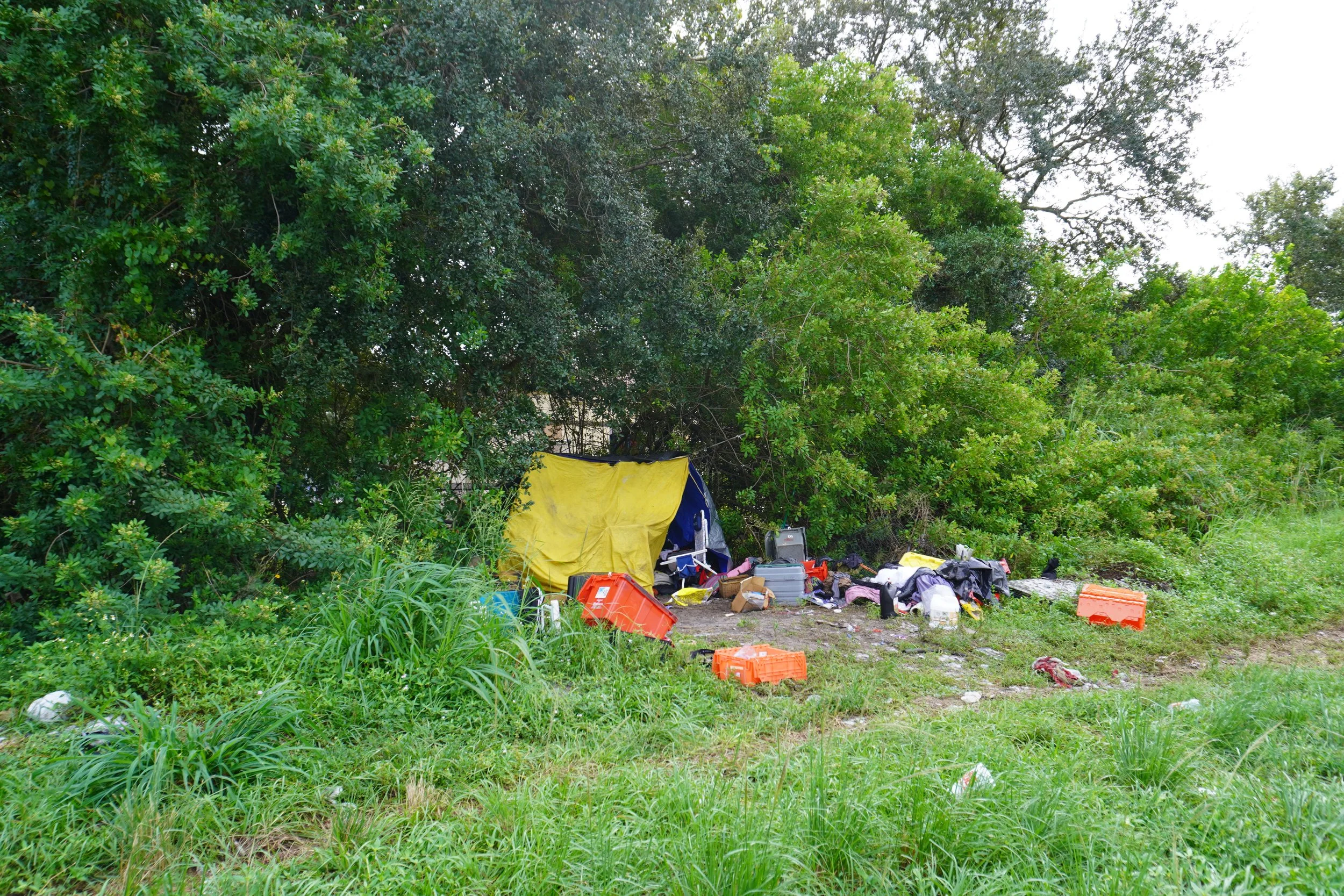Left Behind: Florida’s Hidden Encampments
Hidden behind palmettos and “No Trespassing” signs, entire lives unfold in the shadows of Brevard County’s wetlands.
What looks like untouched forest is, in truth, the last refuge for people pushed out by high rents, stagnant wages, and systemic neglect.
After weeks of rain, makeshift camps near Eau Gallie sit half-flooded, furniture sinking into the mud.
Each piece tells a story—a dresser that once held family photos, a mattress now water-logged and forgotten.
The flooded ground reflects both sky and circumstance, mirroring a system that leaves no firm place to stand.
Flooded forest littered with discarded furniture—remnants of a hidden encampment after heavy rain. (Photo: Ricardo Stoyell)
A second flooded area reveals the fragile remains of temporary shelter washed away by storms. (Photo: Ricardo Stoyell)
At a metal recycling yard in Melbourne, Jason sorts through buckets of aluminum and brass, salvaging what others discard. “Everybody’s trying to scrap and make a little money,” he said. “You find stuff people dump out by the road, clean it up, and bring it here. It’s not much, but it keeps me going.”
Jason sorts metals at Brevard Metal Recycling. “Everybody’s trying to scrap and make a little money,” he said. (Photo: Ricardo Stoyell)
Across town, families with children gather daily near Walmart parking lots. For many, survival means raising about $80 each day—just enough for a single night in a motel room. “We just want to keep our kids with us,” one mother said. “If they go into the system, you never know if you’ll see them again.”
A mother and her child rest near a Walmart parking lot after a day of collecting donations. “We just want to keep our kids with us,” she said. (Photo: Ricardo Stoyell)
A young boy clutches his toy near a store entrance—innocence surviving amid instability.* (Photo: Ricardo Stoyell)
Local shelters and housing programs are overwhelmed. Section 8 waiting lists in Florida can stretch for years, sometimes more than a decade, leaving thousands without realistic access to assistance.
The Florida Council on Homelessness 2024 Report shows statewide wait times averaging over 24 months, and many shelters cannot accept pets—forcing families to choose between housing and their animals.
A bicycle waits outside St. Vincent de Paul—transportation, hope, and survival in one frame. (Photo: Ricardo Stoyell)
The public often views encampments as unsanitary, but conditions vary. Some residents keep their spaces meticulously clean, while others struggle with waste and fatigue.
When local authorities clear the woods to develop affordable housing, the act meant to help also erases fragile ecosystems and the only shelter many people have.
Posted warnings mark the boundaries of the forest where the unhoused find refuge.(Photo: Ricardo Stoyell)
“No Trespassing” signs dot the forest edge, signaling the tension between ownership and necessity. (Photo: Ricardo Stoyell)
According to the National Homelessness Law Center, anti-camping ordinances and “clean-ups” frequently result in fines or jail time. Once incarcerated, people enter privatized systems where commissary goods are sold at steep markups by corporations such as Aramark, deepening the poverty they were arrested for.
9 A rusted cart on a dirt trail marks the line between civilization and survival.(Photo: Ricardo Stoyell)
A forest path disappears into flooded ground, echoing the uncertain path forward.(Photo: Ricardo Stoyell)
References
Florida Council on Homelessness. (2024).
Annual Report on Homelessness in Florida.
Florida Department of Children and Families.
National Homelessness Law Center. (2024).
Criminalization of Homelessness Report.
Pew Charitable Trusts. (2025, July).
How States and Cities Decimated America’s Lowest-Cost Housing Option.

